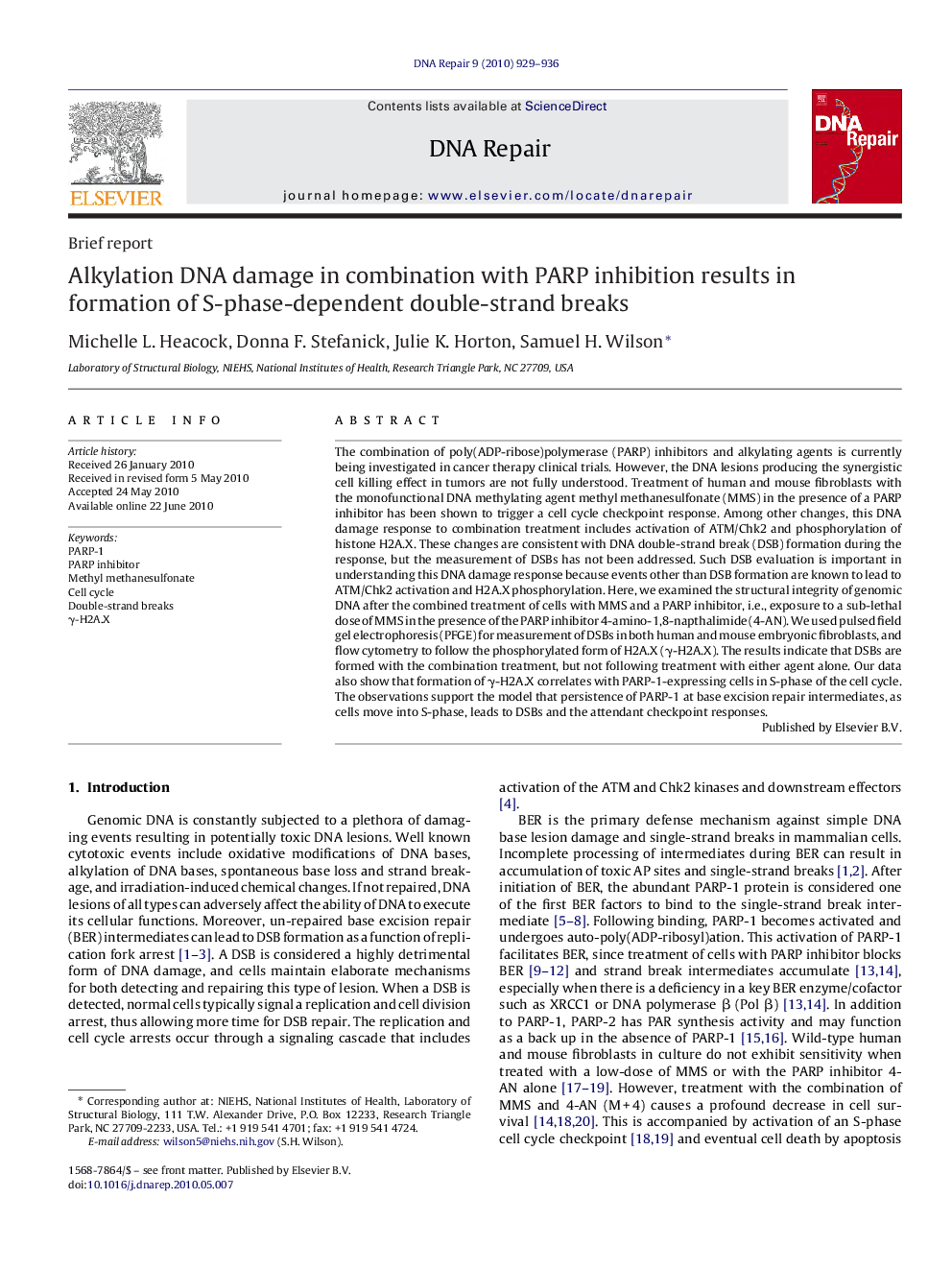| کد مقاله | کد نشریه | سال انتشار | مقاله انگلیسی | نسخه تمام متن |
|---|---|---|---|---|
| 1980440 | 1061856 | 2010 | 8 صفحه PDF | دانلود رایگان |

The combination of poly(ADP-ribose)polymerase (PARP) inhibitors and alkylating agents is currently being investigated in cancer therapy clinical trials. However, the DNA lesions producing the synergistic cell killing effect in tumors are not fully understood. Treatment of human and mouse fibroblasts with the monofunctional DNA methylating agent methyl methanesulfonate (MMS) in the presence of a PARP inhibitor has been shown to trigger a cell cycle checkpoint response. Among other changes, this DNA damage response to combination treatment includes activation of ATM/Chk2 and phosphorylation of histone H2A.X. These changes are consistent with DNA double-strand break (DSB) formation during the response, but the measurement of DSBs has not been addressed. Such DSB evaluation is important in understanding this DNA damage response because events other than DSB formation are known to lead to ATM/Chk2 activation and H2A.X phosphorylation. Here, we examined the structural integrity of genomic DNA after the combined treatment of cells with MMS and a PARP inhibitor, i.e., exposure to a sub-lethal dose of MMS in the presence of the PARP inhibitor 4-amino-1,8-napthalimide (4-AN). We used pulsed field gel electrophoresis (PFGE) for measurement of DSBs in both human and mouse embryonic fibroblasts, and flow cytometry to follow the phosphorylated form of H2A.X (γ-H2A.X). The results indicate that DSBs are formed with the combination treatment, but not following treatment with either agent alone. Our data also show that formation of γ-H2A.X correlates with PARP-1-expressing cells in S-phase of the cell cycle. The observations support the model that persistence of PARP-1 at base excision repair intermediates, as cells move into S-phase, leads to DSBs and the attendant checkpoint responses.
Journal: DNA Repair - Volume 9, Issue 8, 5 August 2010, Pages 929–936